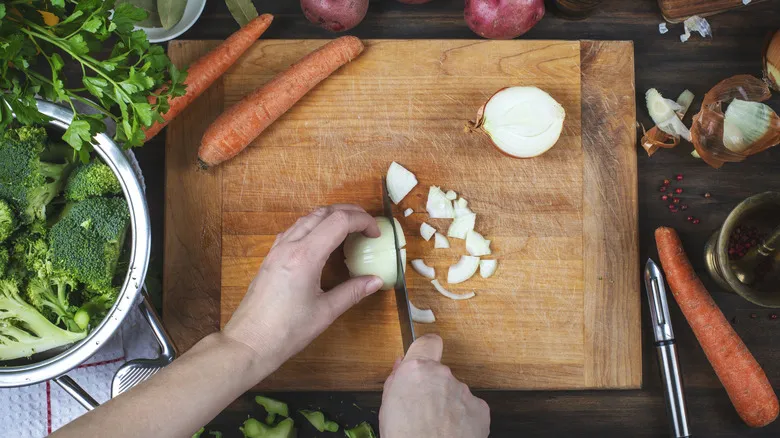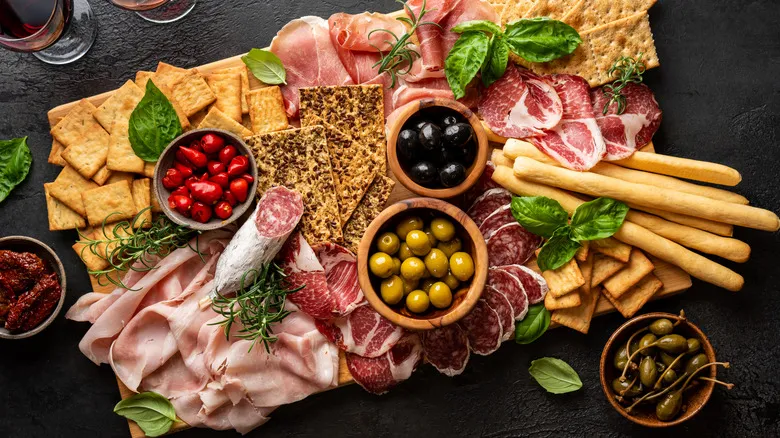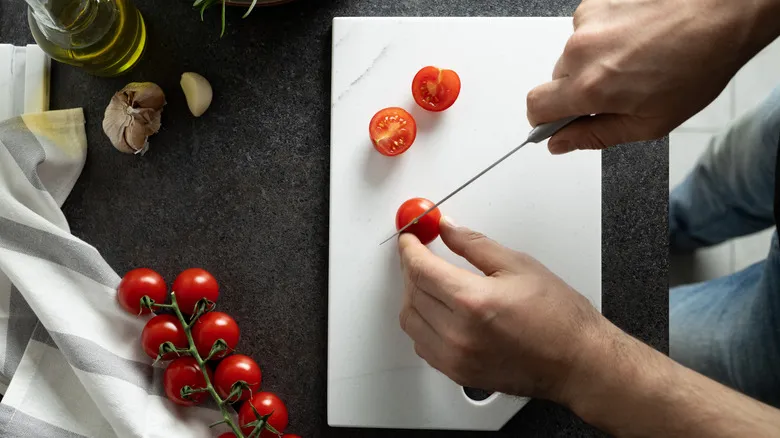To benefit your knives (and your health) use wooden cutting boards instead

To protect your knives and avoid the risk of ingesting microplastics, wooden cutting boards are essential. However, not all wooden boards are created equal; some are too hard or too soft. Like Goldilocks, you want one that is just right.
Maple cutting boards, such as this John Boos model, are among the best choices because maple is a fine-grained wood with smaller pores that trap bacteria, which eventually die off in the crevices. Other recommended woods include walnut, birch, and acacia for the same reason. On the other hand, softer woods like oak have larger pores that allow bacteria to penetrate and thrive. While bamboo cutting boards are often marketed as eco-friendly, they tend to be too harsh on knives, particularly at the nodes where the bamboo segments join.
Although wooden cutting boards cannot be cleaned in the dishwasher for disinfection, they are not less sanitary than plastic alternatives. With a little extra effort, cleaning a wooden cutting board is quite simple, and regular maintenance will keep it hygienic.
Recommended

How To Melt Almond Bark In The Microwave Without Burning It

The Best Board For Charcuterie According To A Pro

Is A Molcajete The Same As A Mortar And Pestle?

The Single-Purpose Kitchen Tool Actually Worth Making Space For
Next up

